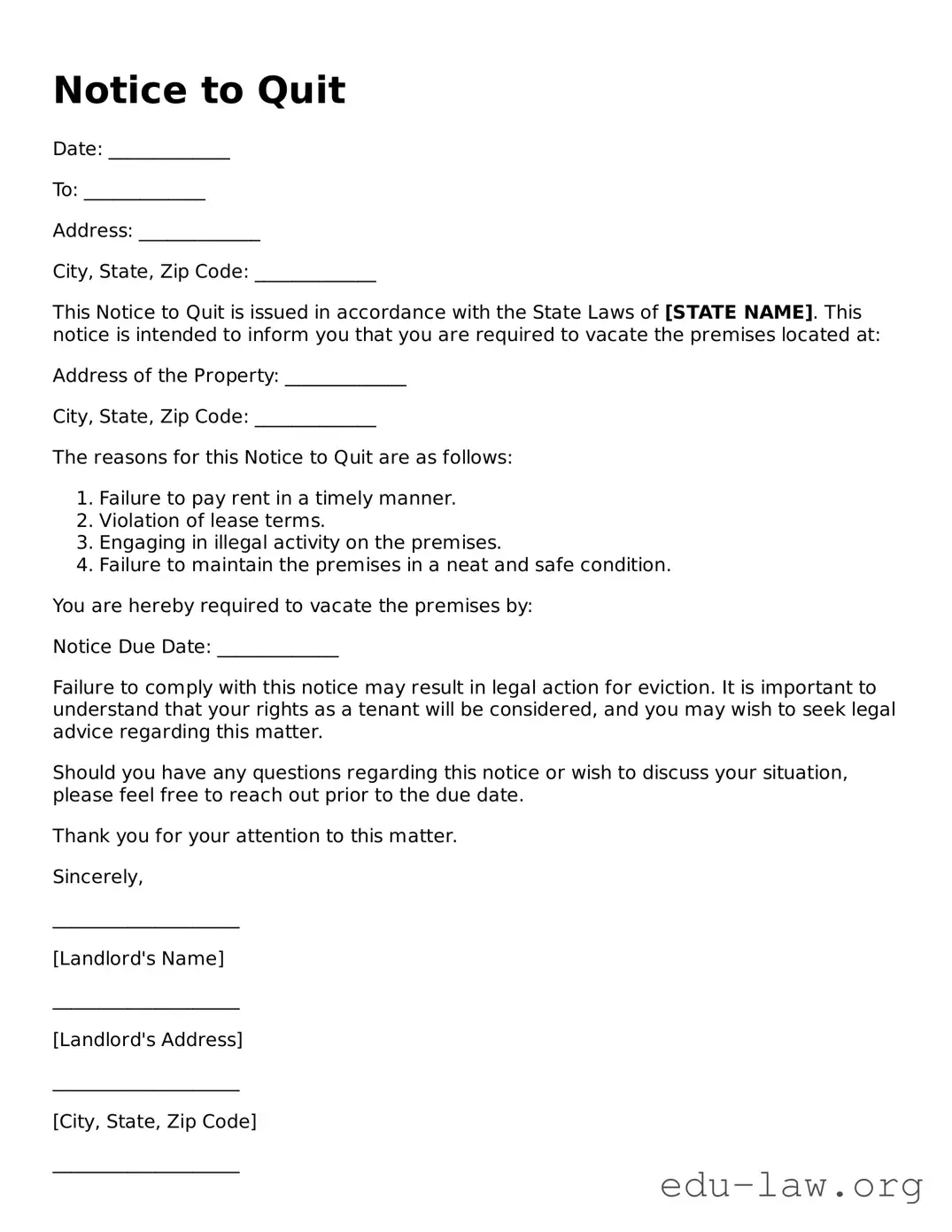What is a Notice to Quit form?
A Notice to Quit is a formal document used by a landlord to request that a tenant vacate the rental property. This notice serves as a first step in the eviction process. It outlines the reasons for termination of the lease and gives the tenant a specific time frame in which to move out.
When should a landlord use a Notice to Quit?
Landlords typically issue a Notice to Quit in situations where tenants have failed to pay rent, violated lease terms, or engaged in illegal activities. It's also used when a landlord decides to sell the property or reclaim it for personal use. The form provides a clear written notice, improving communication between the landlord and tenant.
What information should be included in a Notice to Quit?
The Notice to Quit should include the tenant's name, the address of the rental property, the reason for the notice, and the date by which the tenant must vacate. It is also helpful to mention the specific lease terms that have been violated, if applicable. Lastly, including contact information for further communication adds clarity to the process.
How long does a tenant have to respond to a Notice to Quit?
The time frame for a tenant to respond to a Notice to Quit varies depending on local laws and the reason for the notice. Generally, tenants may be given anywhere from a few days to a month to comply. It’s essential for both parties to understand local regulations to ensure compliance with the allotted time frame.
Can a tenant contest a Notice to Quit?
Yes, tenants have the right to contest a Notice to Quit. If a tenant believes the notice is unjust, they can either address the issues specified in the notice or communicate their concerns to the landlord. In some cases, it may lead to a negotiation or, ultimately, an eviction hearing if the disagreement is not resolved.
What should a tenant do after receiving a Notice to Quit?
Upon receiving a Notice to Quit, tenants should first read the document carefully. They must verify the claims made by the landlord and assess their options. Tenants can pay rent if that’s the issue, correct any lease violations, or seek legal advice if they feel the notice is unwarranted. Responding promptly is vital to avoid any further escalation.
Is legal representation necessary when dealing with a Notice to Quit?
While legal representation is not required to respond to a Notice to Quit, it can be beneficial, especially if the tenant intends to contest the eviction or if the situation involves complex legal issues. Consulting with an attorney may help tenants understand their rights and responsibilities under local laws.
What happens if a tenant ignores the Notice to Quit?
If a tenant ignores the Notice to Quit, the landlord may proceed with the eviction process. This often involves filing a formal eviction lawsuit in court. It is critical for tenants to understand that ignoring the notice can lead to legal actions, resulting in loss of housing and potential negative impacts on their rental history.
